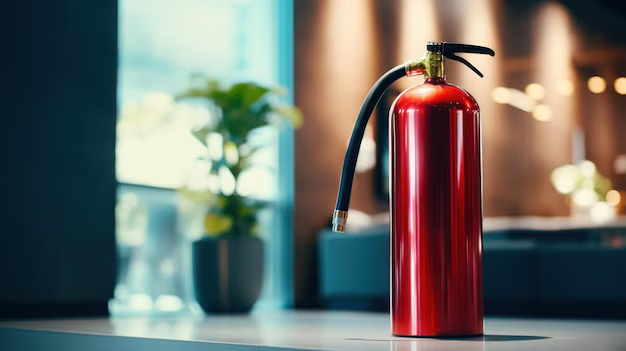In the modern world, electricity is an indispensable part of our daily lives, powering our homes, workplaces, and infrastructure. However, with the convenience and benefits of electricity also come risks, one of the most significant being the potential for electrical fires. Electrical fires can occur due to various reasons, such as faulty wiring, overloaded circuits, or malfunctioning electrical appliances. When such fires break out, it is crucial to have the right tools to combat them effectively. One such tool that plays a critical role in fighting electrical fires is the electrical fire extinguisher.
Understanding Electrical Fires
Before delving into the specifics of electrical fire extinguishers, it is essential to understand the nature of electrical fires. Unlike other types of fires, electrical fires involve energized electrical equipment or wiring. Water-based extinguishers, which are effective for ordinary combustibles like wood or paper, should never be used on electrical fires as they can conduct electricity and pose a risk of electrocution.
What is an Electrical Fire Extinguisher?
An electrical fire extinguisher, also known as a Class C fire extinguisher, is specifically designed to combat fires involving electrical equipment. These extinguishers contain materials that do not conduct electricity, making them safe to use on energized electrical sources. The primary goal of an electrical fire extinguisher is to interrupt the fire triangle by removing heat, oxygen, or fuel to extinguish the fire effectively.
Types of Electrical Fire Extinguishers
There are several types of electrical fire extinguishers available in the market, each designed for specific applications. The most common types include:
Carbon Dioxide (CO2) Fire Extinguishers
Carbon dioxide extinguishers are ideal for electrical fires as they are non-conductive and leave no residue, making them safe for use on sensitive electrical equipment. CO2 extinguishers work by displacing oxygen, thereby suffocating the fire and extinguishing it quickly.
Dry Chemical Fire Extinguishers
Dry chemical extinguishers are versatile and can be used on various types of fires, including electrical fires. These extinguishers contain a dry chemical powder that separates fuel from oxygen, effectively suppressing the fire. However, the residue left by dry chemical extinguishers can be corrosive to sensitive electronic equipment.
Clean Agent Fire Extinguishers
Clean agent extinguishers use a non-conductive extinguishing agent that leaves no residue, making them suitable for use on electrical fires without causing damage to equipment. These extinguishers work by interrupting the chemical reaction of the fire, effectively putting it out.
How to Use an Electrical Fire Extinguisher
Using an electrical fire extinguisher correctly is crucial to ensure the safety of the user and effectively extinguish the fire. Here are the general steps to follow when using an electrical fire extinguisher:
- Evaluate the Situation: Assess the fire to determine if it is safe to extinguish using a fire extinguisher. If the fire is large or spreading rapidly, evacuate the area and call the fire department immediately.
- Select the Right Extinguisher: Ensure you have the appropriate type of electrical fire extinguisher for the specific type of fire you are dealing with.
- Pull the Pin: Pull the safety pin from the extinguisher to activate it.
- Aim at the Base of the Fire: Point the nozzle or hose at the base of the fire, not the flames, and squeeze the handle to discharge the extinguishing agent.
- Sweep Side to Side: Sweep the extinguisher from side to side while aiming at the base of the fire until it is completely extinguished.
- Monitor the Area: Even after the fire is out, it is crucial to monitor the area for any signs of reignition and ensure the fire is fully extinguished.
- Dispose of the Extinguisher: Once the fire is out, follow proper disposal procedures for the extinguisher according to local regulations.
Maintenance and Inspection
Proper maintenance and regular inspection of electrical fire extinguishers are essential to ensure they are in working condition when needed. Here are some key maintenance tips to follow:
- Check the Pressure Gauge: Regularly inspect the pressure gauge to ensure the extinguisher is properly pressurized.
- Inspect the Extinguisher for Damage: Check for any signs of damage, corrosion, or leakage that may affect the functionality of the extinguisher.
- Keep the Extinguisher Accessible: Ensure the extinguisher is easily accessible in case of a fire emergency.
- Schedule Professional Inspections: Periodically have the extinguisher inspected and maintained by a qualified professional to ensure it meets safety standards.
Safety Precautions
When dealing with electrical fires and using electrical fire extinguishers, it is crucial to prioritize safety. Here are some important safety precautions to keep in mind:
- Do Not Use Water: Never use water or water-based extinguishers on electrical fires to avoid the risk of electrocution.
- Turn Off the Power: Whenever possible, shut off the power source to the electrical equipment involved in the fire before attempting to extinguish it.
- Evacuate if Necessary: If the fire is too large or spreading rapidly, evacuate the area immediately and call the fire department.
- Stay Low: When using an extinguisher, stay low to the ground to avoid inhaling smoke and fumes.
Conclusion
In conclusion, electrical fires pose a unique set of challenges due to the involvement of energized electrical equipment. Having the right tools, such as electrical fire extinguishers, is crucial in effectively combating these fires and preventing potential hazards. By understanding the nature of electrical fires, knowing how to use an electrical fire extinguisher correctly, and following proper maintenance and safety procedures, individuals can be better prepared to deal with electrical fire emergencies. Remember, safety should always be the top priority when dealing with fires, and seeking professional help when needed is essential to ensure the well-being of everyone involved.





